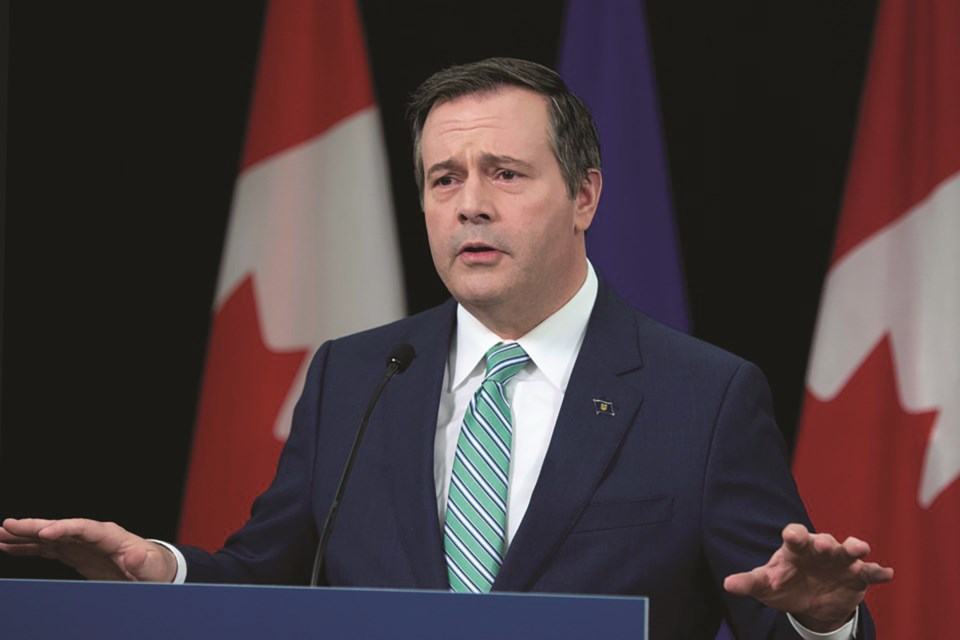Despite a recent climb in the number of COVID-19 cases in the province, the Alberta government has announced that in-school learning will resume in September.
“This decision is ultimately about doing what’s best for students and parents,” said Premier Jason Kenney at a July 21 press conference.
“The vast majority agree it’s time to get back to normal – or as normal as we can – and get kids back to school.”
Before making the announcement, Kenney cited research studies, including an article from Science Magazine, that indicated people under the age of 18 are one-third less likely to contract the coronavirus than adults.
“Alberta’s COVID numbers seem to bear this out – only 14 per cent of all reported infections have been amongst youth under the age of 19,” he said. “Over the past five months, only eight school-aged children have been hospitalized with COVID-19…and most of those infected [had] mild or negligible symptoms.”
Kenney also brought up examples of European countries that successfully reopened their schools amid the pandemic without a climb in COVID-19 cases, such as Belgium, Denmark and the Netherlands.
Dr. Deena Hinshaw, the province’s chief medical health officer, said the decision to reopen schools is not an easy choice, but the right one.
“We know extended school closures negatively impact children’s overall long-term mental, emotional and physical health,” she said at the press conference.
“We will almost certainly identify cases of COVID-19 among students and staff in the fall. Because of this, we are putting measures in place to protect the health of children, staff and families by limiting onward spread within the school.”
Each school board will be able to implement their own health and safety measures to help enforce physical distancing, according to the government’s plan, whether it’s grouping students in cohorts to limit interactions or staggering lunch and snack breaks.
In a July 22 statement, Rocky View Schools (RVS) said the public school division's classes will begin Sept. 2.
“The safety and well-being of students and staff is our top priority as we prepare to reopen schools in September,” said RVS Board Chair Fiona Gilbert. “With this at the forefront of our efforts, RVS will be changing some school routines and practices to employ multiple layers of protection and to adhere to provincial risk mitigation strategies.”
According to the statement, RVS' re-entry plan includes cohorting students where possible, enhancing cleaning practices, promoting proper hand hygiene and coughing/sneezing etiquette, adjusting in-school traffic flow and assigning seating plans on buses.
"RVS is committed to minimizing risks under this scenario and keeping students and staff safe while in school," the statement read. "Key to the success of in-school classes is the cooperation of school staff and families to diligently screen for any symptoms associated with COVID-19 and to stay home if sick."
Wearing masks will not be mandatory, according to the government's plan, though doing so is permitted. Schools will be expected to implement hygiene practices, such as supplying hand sanitizer at entrances and in classrooms and cleaning high-touch surfaces more frequently.
While the government’s plan does not impose a limit on class sizes, Education Minister Adriana LaGrange said schools will be expected to establish measures to enforce physical distancing among students, such as spacing out desks.
In the event of a COVID-19 outbreak in a school, LaGrange said a public health team will investigate to determine when symptoms developed and support the school to minimize any further transmission. Parents would be notified if a case of COVID-19 has occurred at their child’s school, she added, and public health officials would contact anyone who was in close contact with that person.
A severe outbreak could result in a transition to partial in-class learning or a return to at-home learning, LaGrange said. That decision would be determined by the number of cases within a school and the risk of ongoing transmission.
To help families know what to expect in the fall, the Alberta government has created a return-to-school toolkit, including videos, a parent guide and other information. The toolkit can be found at alberta.ca/returntoschool
As for funding, LaGrange said the government recently announced $250 million in additional capital funding that will be available to school boards. She said school boards will be able to use these funds to pay for health-related infrastructure upgrades, such as installing hands-free sinks and automatic doors, or replacing water fountains with water bottle-filling stations.
“School authorities have also been receiving full funding allotments since July 1, and every school authority in Alberta is receiving a funding increase in the upcoming school year,” she said.
School board reserves may also be used to help cover COVID-19-related costs, according to LaGrange, who added the province’s school boards have a total of roughly $363 million available.
Not every stakeholder seems in support of the government's re-entry plan. In a separate press conference held by the Alberta Teachers Association (ATA) immediately following the government’s, president Jason Schilling said the association still has plenty of concerns about the plan.
“Teachers are looking forward to doing the work they love with the students they admire, but we’re concerned about the failure of the government to adequately address concerns raised by teachers about schooling during this continuing pandemic,” he said.
According to Schilling, the ATA wants the government to keep students in the “smallest feasible groups” possible, with the greatest degree of physical distancing in classrooms.
“This is going to be very difficult, given the class size problems that have been well documented, even before the pandemic struck,” he said, adding that schools will also need additional resources to support frequent handwashing, sanitizing and ongoing cleaning of high-touch surfaces throughout the school day.
“In many schools, daytime cleaning staff is no longer commonly available and there will have to be a change there supported with funding,” he said.



